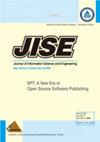基于深度学习的水果营养缺乏自动识别系统
IF 1.1
4区 计算机科学
Q4 COMPUTER SCIENCE, INFORMATION SYSTEMS
Journal of Information Science and Engineering
Pub Date : 2021-09-01
DOI:10.6688/JISE.202109_37(5).0011
引用次数: 2
摘要
深度学习的最新发展使我们能够开发一种基于计算机视觉的系统,用于识别、检测和定位水果中的营养缺乏。由于时间的限制,使用一种优化的、快速的水果质量检测系统是很重要的。在本文中,输入是作为一幅图像。基于深度学习的方法提取低层次和高级特征,如边缘、几何、统计、纹理、强度等。用测试数据对系统进行验证后,系统对输出进行预测。通过避免完全连接层来优化处理时间,进一步减少了网络中神经元的需求。卷积神经网络提取水果的特征,修正线性单元(ReLu)去除非水果像素。池化通过选择像素的最大值来收缩图像。重复这个过程,直到图像的大小达到所需的水平。目的是识别物体并识别它们。前景区域对象是我们感兴趣的,并被分割用于更高级的图像处理。该系统的精度为99.30%,处理时间为3.207秒。本文章由计算机程序翻译,如有差异,请以英文原文为准。
Deep Learning based Automated Fruit Nutrients Deficiency Recognition System
The recent development in deep learning allows us to develop a computer vision-based system for recognition, detection, and localization of nutrients deficiency in fruits. Due to the time constraints, it is important to use an optimized and fast system for fruit quality inspection. In this paper, the input is taken as an image. A deep learning-based method extracts low level and high-level features such as edges, geometrical, statistical, texture, intensity, etc. After validation of the system with the test data, the output is predicted by the system. The processing time is optimized by avoiding fully connected layers which further minimize the requirement of neurons in the network. The convolutional neural network extracts the features of the fruits, Rectified Linear Unit (ReLu) removes the non-fruit pixels. Pooling shrinks, the image by selecting the maximum value of the pixel. The process is repeated until the size of the image is at the desired level. The aim is to identify the objects and recognize them. The foreground region objects are of our interest and being segmented for higher-level image processing. The proposed system attains the accuracy of 99.30 % with the processing time of 3.207 sec.
求助全文
通过发布文献求助,成功后即可免费获取论文全文。
去求助
来源期刊

Journal of Information Science and Engineering
工程技术-计算机:信息系统
CiteScore
2.00
自引率
0.00%
发文量
4
审稿时长
8 months
期刊介绍:
The Journal of Information Science and Engineering is dedicated to the dissemination of information on computer science, computer engineering, and computer systems. This journal encourages articles on original research in the areas of computer hardware, software, man-machine interface, theory and applications. tutorial papers in the above-mentioned areas, and state-of-the-art papers on various aspects of computer systems and applications.
 求助内容:
求助内容: 应助结果提醒方式:
应助结果提醒方式:


